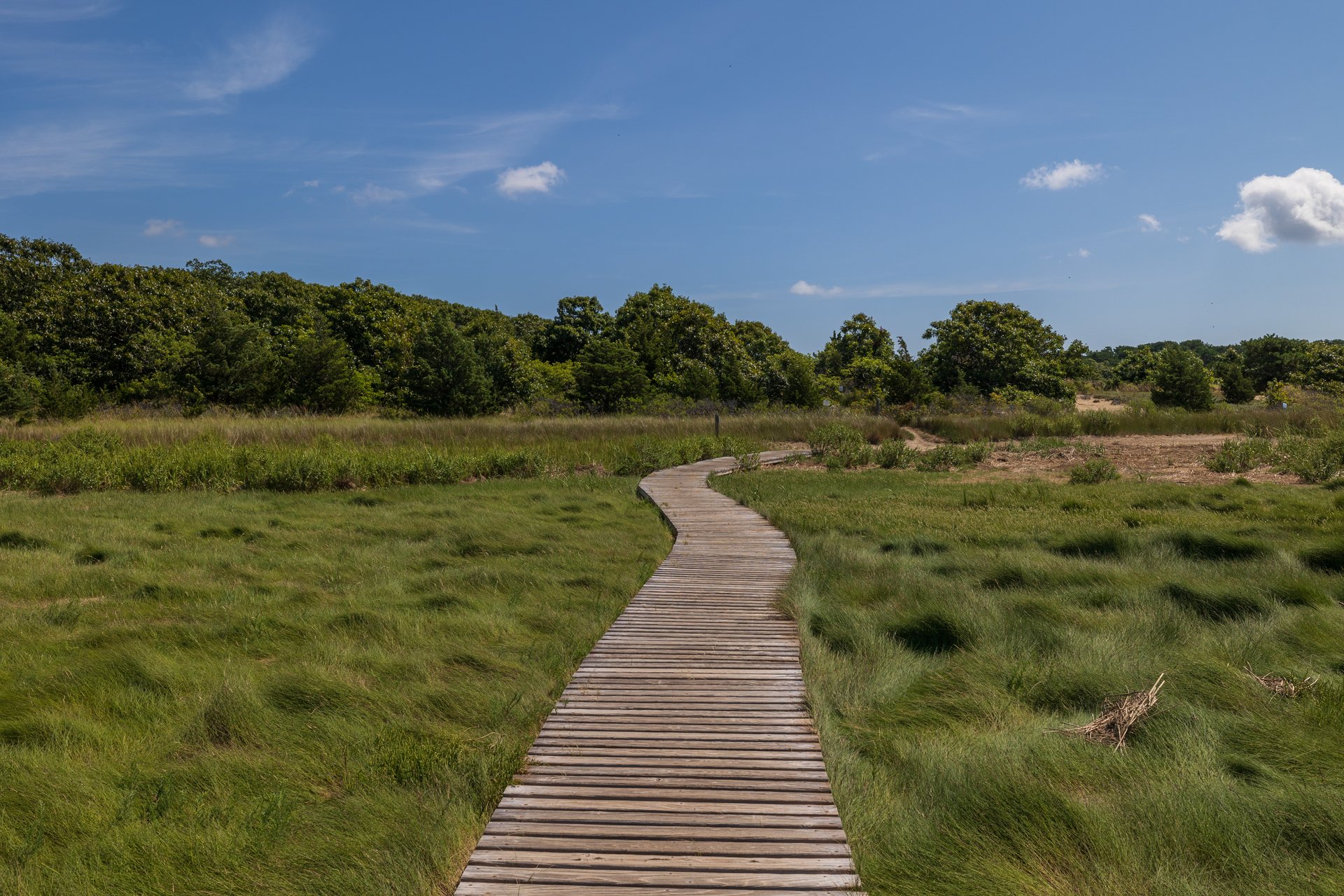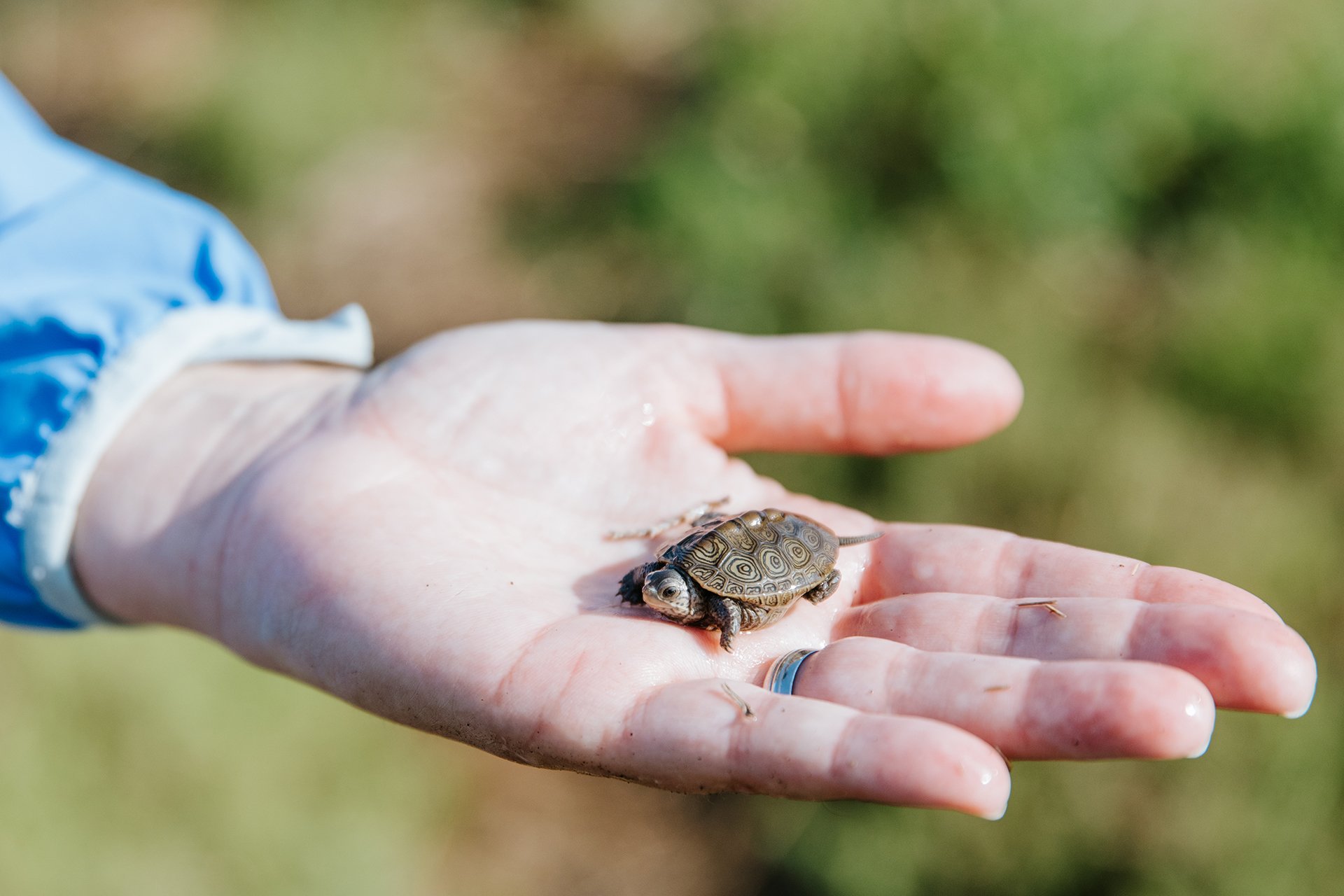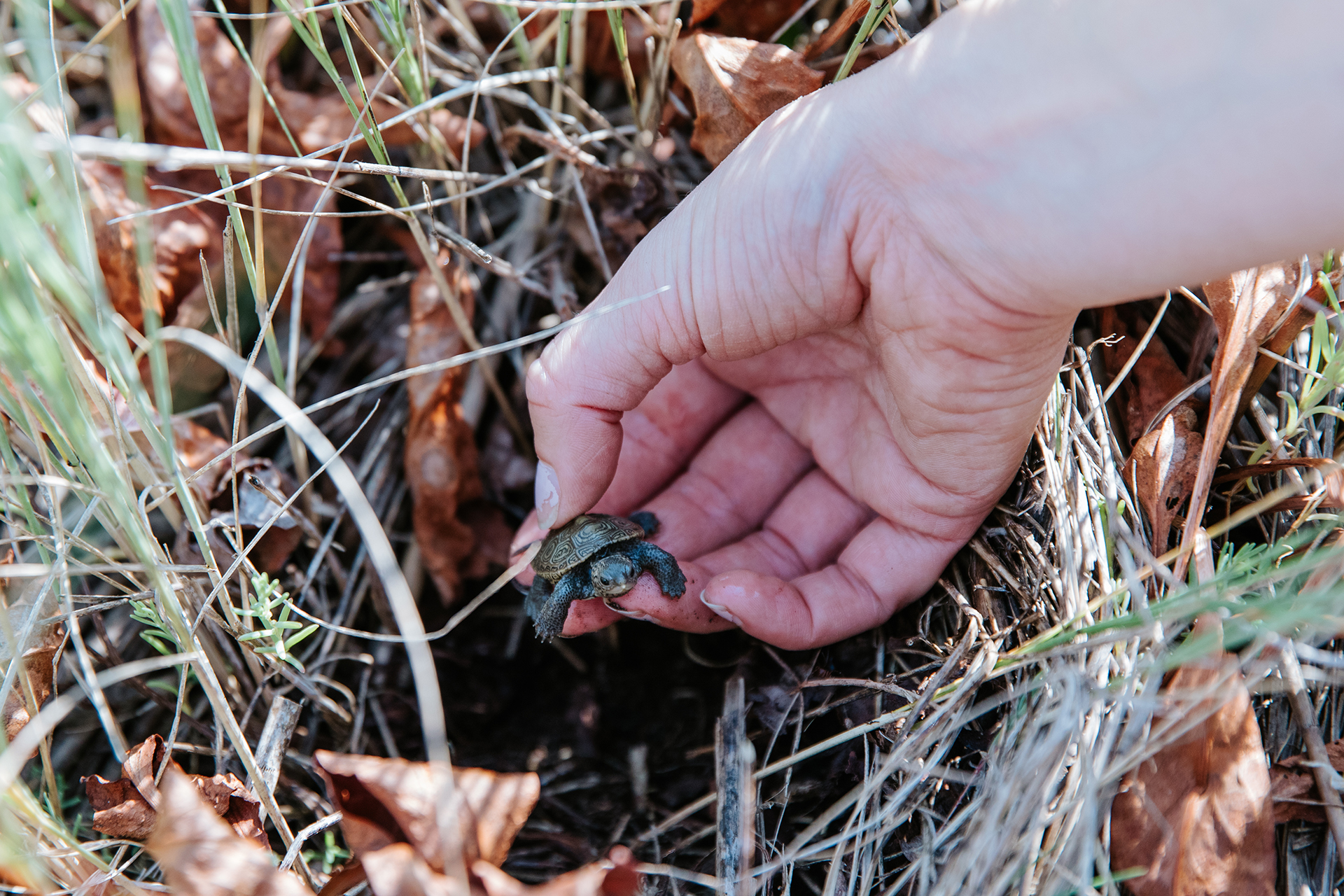Outer Cape Concludes Busy Diamondback Terrapin Nesting Season
September 26, 2023
More than 100 volunteers and staff are wrapping up what appears to be a very strong diamondback terrapin nesting season on the Outer Cape. In total, we protected more nests than ever—521 in “turtle gardens” from East Orleans to North Wellfleet. Turtle gardens are upland areas near a salt marsh cleared of some vegetation so that turtles can more easily dig their nests.
Protecting Diamondback Terrapins
While we still used traditional predator excluders (PEs), the cage-like structures you might see off certain trails at Wellfleet Bay, we expanded our pilot testing of “self-release” PEs. These protectors are flat wire screens placed on the surface of a nest that allow hatchlings to leave when they’re ready. Traditional PEs are installed about 6 inches below the soil and must be removed before the hatchlings can be released.
Deterring Predators from Hatchlings
Even with our best nest protection efforts, predators are always part of a terrapin season. This year, like last, featured maggots getting into nests and feasting on eggs and hatchlings. The maggots, or fly larvae, get their start as eggs laid on top of the nest. When the eggs hatch, the larvae work their way, possibly by smell, into the nest chamber where they feast. It looks as horrible as it sounds! Maggots are usually a big issue in very warm summers—like last year—as are thirsty plant roots, which can work their way into a nest chamber and puncture eggs.
Mammalian predators included the usual suspects: foxes, raccoons, and coyotes. Crows are a special issue because they tend to key in on nests that are hatching and wait for baby turtles to climb up the inside of a PE where the crows can grab them. Fortunately, as nests approach their hatch dates, PEs are outfitted with crow guards, an extra layer of screen, to make it more difficult for crows to access the PE and do damage.
The Good News
So far at least 4000 healthy terrapin hatchlings have been released and we still have some nests remaining. It’s shaping up to be a very productive year, and Terrapin Volunteer and Researcher, Barbara Brennessel, had this optimistic observation: she noted smaller clutches this year at her North Wellfleet sites, about 8-10 eggs instead of the usual 12-16. She speculates that the smaller clutches may have been laid by younger females, which begin nesting when they reach 9-12 years of age. It could be a sign that our years of nest protection are starting to pay off!
Learn More About Our Conservation Efforts
Our diamondback terrapin conservation program began in 2005. Find out how terrapins became threatened in Massachusetts and how you can help them.





